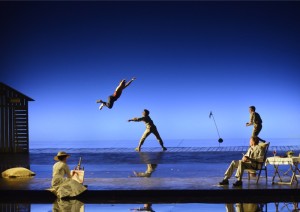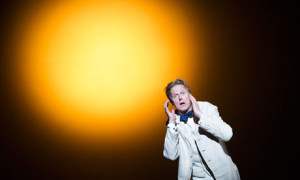Death in Venice
Benjamin Britten (1970)
This is in fact a revival of the most exquisite production which previously I had not seen. My first and until last month only Death in Venice was in Aldeburgh – I am guessing in 1979 or 1980 – with Peter Peers giving his farewell performance as Aschenbach.
In those days I was a mere novice in the cloisters of opera as opposed to a fully professed membership of the order. In those days too I had not yet discovered Britten or modern classical music. It was thanks to Dr Roger Mettam, friend and mentor, that I was launched upon this particular adventure. until that time I had reserved myself very much for the music of the baroque, classical and early Romantic – with special reference to religious and choral music.
Needless to say despite the glorious sun and the wonderful location at the Maltings I was not altogether moved by Britten’s account of the novella by Thomas Mann which I only read after the defining film by Visconti with that anguished, fastidious, detailed, compelling performance of the late, great Dirk Bogarde. Interestingly, Britten already unwell felt the shadow of the visconti film. This was to be his last Opera before his untimely death. looking back I can hardly believe it was a composed only seven years before I first saw it. Aschenbach was of course written as was so much of Britten to suit the reedy tenor of Peter Peers. Thus, to revisit this moment of my life once again with Roger Mettam was an interesting experience. Music I thought inaccessible and rather dull I now find rather intense and very beautiful. And having been in between times many times to Venice I found this production evoked and re-captured so much of the haunting, intense beauty of this arcadia of architecture afloat in lapping waters.
John Graham-Hall brilliantly held the stage with every phrase clear. Complementing his heroic performance there was an equally notable one by from Andrew Shore, who incarnates seven figures including the elderly fop, the barber, the hotel manager, and the commedia dell’arte clown, with vivid characterisation each time – a performance replicating virtuosity of John Shirley Quirk in Aldeburgh. The counter-tenor Tim Mead was Voice of Apollo cuts through the opera like cold steel. I was not convinced his appearance on stage in the dream sequence added anything.
Sam Zaldivar’s danced Tadzio as definitively right as played by Bjorn Andresen was in the film. There were playful sequences of slow pirouettes or whirling no-hands cartwheels which were perfectly executed. This is the world of youth, lost to Aschenbach – a world he tries desperately to recover. Kim Brandstrup’s choreography was a delight, all night, all the way through, never out of step or out of place, the smallest details like three small girls running in irregular formation across the beach was precisely choreographed and made to look carelessly natural.



